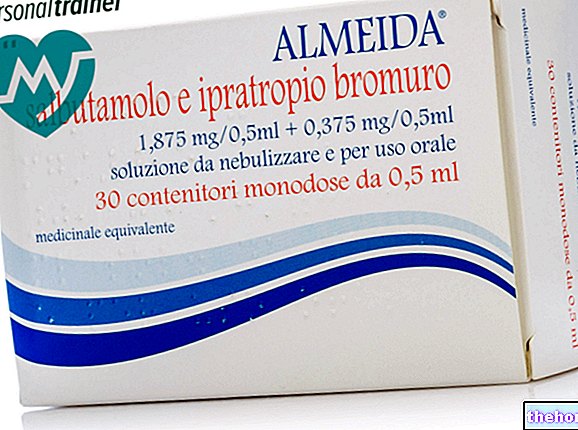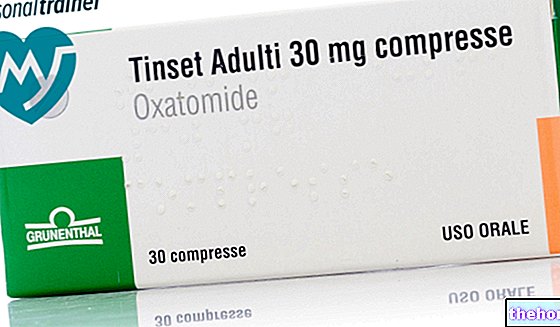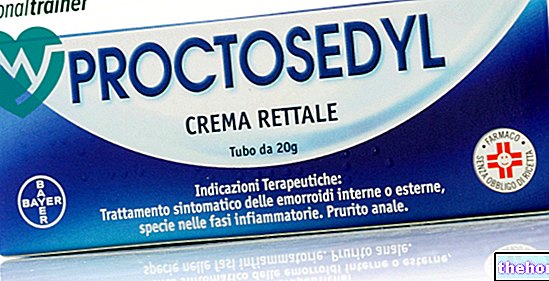Active ingredients: Cefalexin
Ceporex® 1g Coated Tablets
Indications Why is Ceporex used? What is it for?
PHARMACOTHERAPEUTIC CATEGORY
Beta-lactam antibacterials - cephalosporins
THERAPEUTIC INDICATIONS
CEPOREX is a bactericidal antibiotic from the cephalosporin group active against a wide range of Gram-positive organisms
and Gram-negative. It is indicated in the treatment of the infectious forms sustained by sensitive bacteria.
Respiratory system: acute and chronic bronchitis; infected bronchiectasis and bacterial pneumonia.
ENT infections: otitis media, mastoiditis, sinusitis, follicular tonsillitis and pharyngitis
Infections of the urinary tract: acute and chronic pyelonephritis, cystitis and prostatitis
. Obstetric-gynecological infections.
Skin, bone and soft tissue infections.
Gonorrhea and syphilis (when the patient is hypersensitive to penicillin).
Cefalexin is active against:
Gram positive organisms
Cefalexin is resistant to the action of staphylococcal penicillinase and is therefore active against most of the stems of
Staphylococcus aureus, including penicillin-resistant strains (excluding methicillin-resistant strains).
Other sensitive microorganisms are Streptococcus pyogenes, Streptococcus pneumoniae, Streptococcus agalactiae (Group B),
the majority of the stems of Streptococcus viridans and other ß-haemolytic Streptococci.
Cefalexin has in vitro activity against
Corynebacterium diphtheriae.
Gram-negative organisms
Cefalexin has in vitro activity against gram-negative microorganisms such as Escherichia coli, Klebsiella spp., Proteus mirabilis and the microorganisms Salmonella and Shigella spp.
Finally, Neisseria gonorrhoeae and Neisseria meningitidis are sensitive
Contraindications When Ceporex should not be used
- Hypersensitivity to the active substance or to any of the excipients
- Patients with hypersensitivity to cephalosporins
Precautions for use What you need to know before taking Ceporex
Cephalosporins should be used with special caution in people who have had a previous allergic reaction to penicillins or other beta-lactams.
There is evidence of partial cross-allergenicity between penicillins and cephalosporins at both clinical and laboratory levels and, although rare, there have been reports of patients who have experienced reactions to both drugs, sometimes even of anaphylactic type, especially after parenteral administration.
As with other broad spectrum antibiotics, prolonged use may favor the development of non-sensitive microorganisms (Candida, Enterococci, Clostridium difficile) which may require treatment interruption.
Cases of pseudomembranous colitis have occurred with the use of broad spectrum antibiotics, so it is important to consider the diagnosis in patients who present with severe diarrhea during and after antibiotic use.
As with other antibiotics which are primarily eliminated by the kidney in severe renal insufficiency, the dosage of CEPOREX should be appropriately reduced (see Dose, method and time of administration).
Administration of CEPOREX may interfere with some laboratory tests by causing false positivity of glycosuria with Benedict's or Fehling's solutions, or with Clinitest tablets, but not with enzymatic methods.
Positive Coombs test has been reported during treatment with cephalosporins. CEPOREX may interfere with the alkaline picrate assay for creatinine giving falsely elevated results, however this is unlikely to be of clinical relevance.
Interactions Which drugs or foods may change the effect of Ceporex
The simultaneous use of high doses of cephalosporins and nephrotoxic drugs such as aminoglucosides or potent diuretics (furosemide, ethacrynic acid and piretanide) can have negative effects on renal function. Clinical experience has shown that with the use of cephalexin ai recommended dosages, this effect is less likely.
Like other antibiotics, cefalexin can affect intestinal flora, causing less re-absorption of estrogen and reduced efficacy of COCs.
Clinical experience has shown this to be unlikely with CEPOREX at the recommended dosage.
Warnings It is important to know that:
The medicine is not contraindicated for people with celiac disease.
Pregnancy
Laboratory studies and clinical experience do not show evidence of teratogenicity, but as with all drugs in pregnant women and in very early childhood, the product should be administered in cases of real need, under the direct supervision of the doctor.
Feeding time
Cefalexin is excreted with breast milk in low concentrations and should therefore be used with caution in breastfeeding patients.
Dosage and method of use How to use Ceporex: Dosage
Adults: the usual dose is 2-3 g per day divided into 2-4 administrations (every 6-12 hours). However, based on the clinical evaluation of the individual case, the doctor may vary this dose between 1 and 4 grams per day.
Children: the usual dose is 80-100 mg / kg of body weight per day. In individual cases, in the opinion of the doctor, the dosage can be varied within the limits indicated for adults.
The duration of the treatment is conditioned by the clinical evolution and must be established according to the judgment of the treating physician.
Kidney failure
Accumulation of cefalexin can occur when renal function is reduced by about half of normal. Clinical experience indicates that in view of the high therapeutic index of CEPOREX, the recommended standard doses should only be halved in patients with severe renal insufficiency (creatinine clearance <10 ml / min).
The maximum recommended doses should be reduced by 50% in mild renal insufficiency (creatinine clearance between 20-50 ml / min), by 75% in moderate (creatinine clearance between 10-20 ml / min) and by " 87.5% in severe (creatinine clearance <10 ml / min)
In adults undergoing intermittent dialysis, an additional 500 mg dose of CEPOREX should be given after each dialysis, i.e. up to 1 g overall over 24 hours. In children, the supplementary dose is 8 mg / kg.
Elderly patients: The possibility of renal insufficiency should be considered in the elderly.
Overdose What to do if you have taken too much Ceporex
Serum concentrations of cefalexin (CEPOREX) can be significantly lowered by hemodialysis and peritoneal dialysis
Side Effects What are the side effects of Ceporex
Data from large clinical trials were used to determine the frequency of very common to rare side effects. The frequencies assigned to all other undesirable effects (ie those occurring with post-marketing pharmacovigilance incidence and refer to the reporting frequency rather than the actual frequency.
The following convention was used for frequency classification:
very common ≥1 / 10
common ≥1 / 100 e
uncommon ≥1 / 1000 e
rare ≥1 / 10,000 e
very rare
Infections and infestations
Common: Prolonged use can induce the development of Candida causing vulvovaginitis
Changes in the blood and lymphatic system
Common: Positive Coombs test
Rare: reversible neutropenia
Very rare: haemolytic anemia. Cephalosporins, as a class, tend to be absorbed on the surface of erythrocyte cell membranes. If antibodies directed against the drug are also present this can lead to positive Coombs test results (which can interfere with direct transfusion compatibility testing) and very rarely to haemolytic anemia.
Alterations of the immune system
Hypersensitivity reaction which includes:
Rare: anaphylaxis
Very rare: angioedema
Hypersensitivity: As with other cephalosporins, hypersensitivity phenomena occasionally occur. The possibility of occurrence of the latter is greater in individuals who have previously experienced hypersensitivity reactions and in those with a previous history of allergy, asthma, hay fever, urticaria. CEPOREX should therefore be used with caution in patients with previous drug hypersensitivity reactions.
Alterations of the gastrointestinal system
Common: gastrointestinal signs / symptoms including nausea, diarrhea
Uncommon: vomiting
Very rare: pseudomembranous colitis
Glossitis has been reported
Alterations of the skin and subcutaneous tissue
Common: Drug rash of either urticarial or maculopapular type
Very rare: severe skin reactions including toxic epidermal necrolysis (exanthematic necrolysis) and Stevens Johnson syndrome Renal and urinary disorders
Very rare: reversible interstitial nephritis.
Occasionally, transient changes in some laboratory parameters such as eosinophilia, leukopenia, increase in serum transaminases, total bilirubin and azotemia have been observed.
Other reactions observed were dizziness, asthenia, headache, chest tightness, arthralgia, vaginal moniliasis, anogenital itching.
Expiry and Retention
Expiry: see the expiry date printed on the package.
The expiry date indicated refers to the product in intact packaging, correctly stored.
Warning: do not use the medicine after the expiry date shown on the package.
Conservation rules: Store at a temperature not exceeding 30 ° C.
COMPOSITION
One coated tablet contains:
Active ingredient: cefalexin 1 g
Excipients: microcrystalline cellulose, magnesium stearate, hypromellose, titanium dioxide (E 171).
PHARMACEUTICAL FORM AND CONTENT
8 coated tablets
Source Package Leaflet: AIFA (Italian Medicines Agency). Content published in January 2016. The information present may not be up-to-date.
To have access to the most up-to-date version, it is advisable to access the AIFA (Italian Medicines Agency) website. Disclaimer and useful information.
01.0 NAME OF THE MEDICINAL PRODUCT
CEPOREX 1 G COATED TABLETS
02.0 QUALITATIVE AND QUANTITATIVE COMPOSITION
CEPOREX 1 g Coated tablets
One coated tablet contains:
Active ingredient: cefalexin 1 g
For excipients see 6.1
03.0 PHARMACEUTICAL FORM
Coated tablets
04.0 CLINICAL INFORMATION
04.1 Therapeutic indications
CEPOREX is a bactericidal antibiotic from the cephalosporin group active against a wide range of Gram-positive and Gram-negative organisms. It is indicated in the treatment of the following infectious forms sustained by sensitive bacteria:
Respiratory system: acute and chronic bronchitis, infected bronchiectasis and bacterial pneumonia.
Otolaryngological infections: otitis media, mastoiditis, sinusitis, follicular tonsillitis and pharyngitis.
Infections of the urinary tract: acute and chronic pyelonephritis, cystitis and prostatitis.
Obstetric-gynecological infections.
Skin, bone and soft tissue infections.
Gonorrhea and syphilis (when the patient is hypersensitive to penicillin).
04.2 Posology and method of administration
Adults: the usual dose is 2-3 g per day divided into 2-4 administrations (every 6-12 hours). However, based on the clinical evaluation of the individual case, the doctor may vary this dose between 1 and 4 grams per day.
Children: the usual dose is 80-100 mg / kg of body weight per day. In individual cases, in the opinion of the doctor, the dosage can be varied within the limits indicated for adults.
The duration of the treatment is conditioned by the clinical evolution and must be established according to the judgment of the treating physician.
Kidney failure
When renal function is reduced by about half of normal, accumulation of cephalexin can occur.
Clinical experience indicates that due to the high therapeutic index of CEPOREX, the recommended standard doses should only be halved in patients with severe renal insufficiency (creatinine clearance
The maximum recommended doses should be reduced by 50% in mild renal insufficiency (creatinine clearance between 20-50 ml / min), by 75% in moderate (creatinine clearance between 10-20 ml / min) and by " 87.5% in severe (creatinine clearance
In adults undergoing intermittent dialysis, an additional 500 mg dose of CEPOREX should be given after each dialysis, i.e. up to 1 g overall over 24 hours. In children, the supplementary dose is 8 mg / kg.
Elderly patients in the elderly the possibility of renal insufficiency should be considered.
04.3 Contraindications
Hypersensitivity to the active substance or to any of the excipients
Patients with hypersensitivity to cephalosporins
04.4 Special warnings and appropriate precautions for use
Cephalosporins should be used with special caution in people who have had a previous allergic reaction to penicillins or other beta-lactams.
There is evidence of partial cross-allergenicity between penicillins and cephalosporins at both clinical and laboratory levels and, although rare, there have been reports of patients who have experienced reactions to both drugs, sometimes even of anaphylactic type, especially after parenteral administration.
As with other broad spectrum antibiotics, prolonged use can favor the development of non-sensitive microorganisms (Candida, Enterococci,Clostridium difficile) which may require the interruption of treatment.
Cases of pseudomembranous colitis have occurred with the use of broad spectrum antibiotics, so it is important to consider the diagnosis in patients who present with severe diarrhea during and after antibiotic use.
As with other antibiotics which are mainly eliminated by the kidney in cases of marked renal insufficiency, the dosage of CEPOREX should be appropriately reduced (see section 4.2.).
Administration of CEPOREX may interfere with some laboratory methods causing false positivity of glycosuria with Benedict's or Fehling's solutions, or with Clinitest tablets, but not with enzymatic methods.
Positive Coombs tests have been reported during treatment with cephalosporins.
CEPOREX may interfere with the alkaline picrate assay for creatinine giving falsely elevated results, however this is unlikely to be of clinical relevance.
04.5 Interactions with other medicinal products and other forms of interaction
The contemporary use of high doses cephalosporins and nephrotoxic drugs such as aminoglycosides or potent diuretics (furosemide, ethacrynic acid and piretanide) can have adverse effects on kidney function. Clinical experience has shown that this effect is less likely with the use of cefalexin at recommended dosages.
Like other antibiotics, cefalexin can affect intestinal flora, causing less re-absorption of estrogen and reduced efficacy of COCs.
04.6 Pregnancy and lactation
Pregnancy
Laboratory studies and clinical experience do not show evidence of teratogenicity, but as with all drugs in pregnant women and in very early childhood, the product should be administered in cases of real need, under the direct supervision of the doctor.
Feeding time
Cefalexin is excreted with breast milk in low concentrations and should therefore be used with caution in breastfeeding patients.
04.7 Effects on ability to drive and use machines
None have been reported.
04.8 Undesirable effects
Data from large clinical trials were used to determine the frequency of very common to rare side effects. The frequencies assigned to all other undesirable effects (ie those occurring with post-marketing pharmacovigilance incidence and refer to the reporting frequency rather than the actual frequency.
The following convention was used for frequency classification:
very common ≥ 1/10
common ≥1 / 100 e
uncommon ≥1 / 1000 e
rare ≥1 / 10,000 e
very rare
Infections and infestations
Common: Prolonged use can induce the development of Candida causing vulvovaginitis
Changes in the blood and lymphatic system
Common: Positive Coombs test
Rare: reversible neutropenia
Very rare: haemolytic anemia.
Cephalosporins, as a class, tend to be absorbed on the surface of erythrocyte cell membranes. If antibodies directed against the drug are also present this can lead to positive Coombs test results (which can interfere with direct transfusion compatibility testing) and very rarely to haemolytic anemia.
Alterations of the immune system
Hypersensitivity reaction which includes:
Rare: anaphylaxis
Very rare: angioedema
Hypersensitivity: as with other cephalosporins, hypersensitivity phenomena occasionally occur. The possibility of occurrence of the latter is greater in individuals who have previously experienced hypersensitivity reactions and in those with a previous history of allergy, asthma, hay fever, urticaria. CEPOREX should therefore be used with caution in patients with previous drug hypersensitivity reactions.
Alterations of the gastrointestinal system
Common: gastrointestinal signs / symptoms including nausea, diarrhea
Uncommon: vomiting
Very rare: pseudomembranous colitis
Glossitis has been reported
Alterations of the skin and subcutaneous tissue
Common: Drug rash of either urticarial or maculopapular type
Very rare: severe skin reactions including toxic epidermal necrolysis (exanthematic necrolysis) and Stevens Johnson syndrome
Renal and urinary disorders
Very rare: reversible interstitial nephritis.
Occasionally, transient changes in some laboratory parameters such as eosinophilia, leukopenia, increase in serum transaminases, total bilirubin and azotemia have been observed.
Other reactions observed were dizziness, asthenia, headache, chest tightness, arthralgia, vaginal moniliasis, anogenital itching.
04.9 Overdose
Serum concentrations of cefalexin can be significantly lowered by hemodialysis and peritoneal dialysis.
05.0 PHARMACOLOGICAL PROPERTIES
05.1 Pharmacodynamic properties
Pharmacotherapeutic group: Cephalosporins and related substances - Beta-lactam antibacterials
ATC code: J01DB01
Bacteriology
Cefalexin is a bactericidal antibiotic belonging to the cephalosporin class and is active against a wide range of Gram-negative and Gram-positive organisms.
Gram positive organisms
Cefalexin is resistant to the action of staphylococcal penicillinase and is therefore active against most of the stems ofStaphylococcus aureus, including penicillin-resistant strains (excluding methicillin-resistant strains).
Other sensitive microorganisms are it Streptococcus pyogenes, lo Streptococcus pneumoniae, lo Streptococcus agalactiae (Group B), the majority of the jambs of Streptococcus viridans and other β-haemolytic streptococci. Cefalexin has in vitro activity againstCorinebacterium diphtheria.
Gram-negative organisms
Cefalexin possesses in vitro activity against gram-negative microorganisms such as Escherichia coli, Klebsiella spp, Proteus mirabilis, and microorganisms Salmonella and Shigella spp. They are finally sensitive there Neisseria gonorrhoeae and the Neisseria meningitidis.
05.2 "Pharmacokinetic properties
Absorption
Cefalexin is almost completely absorbed in the upper part of the gastrointestinal tract. After oral administration, absorption is rapid and serum peak levels (4.5 mcg / ml for a dose of 125 mg, 9 mcg / ml for a dose of 250 mg, 18 mcg / ml for a dose of 500 mg and 32 mcg / ml for a dose of 1000 mg) is usually achieved in one hour In patients with normal renal function, serum levels persist for 4 - 6 hours and are no longer detectable after 8 hours.
Absorption is delayed when cefalexin is administered with food or immediately after meals, while the total amount absorbed is not altered.
The absorption of cefalexin is not altered in the presence of celiac disease, partial gastrectomy, achlorhydria, jaundice or diverticulosis (duodenal or jejunal).
Distribution
Plasma protein binding is weak and reversible and ranges from 0 to 30% according to the method of determination.
Cefalexin is widespread in tissues and high concentrations of the drug are found in all organs, particularly the liver and kidneys. Cefalexin reaches therapeutic levels in the blood, urine, bile, synovial fluid, pus, tonsillar tissue, amniotic fluid, umbilical cord blood and fetal blood.
Metabolism and elimination
Cefalexin is not metabolised in the body.
The serum half-life is normally about 1 hour but is prolonged in neonates (see section 4.2).
Cefalexin is rapidly eliminated through glomerular filtration and tubular secretion reaching the urine in an active and unchanged form.
After oral administration, high urinary concentrations (80-100%) are found within 6 - 8 hours.
Cefalexin is excreted with breast milk in low concentrations.
Co-administration of probenecid delays the excretion of cefalexin and increases its serum levels by 50 to 100%.
Patients with renal insufficiency
An increase in the serum half-life of cefalexin occurs in patients with impaired renal function. Clinical experience indicates that due to the high therapeutic index of cefalexin, the recommended standard doses should only be halved in patients with severe renal insufficiency (clearance of creatinine
05.3 Preclinical safety data
Cefalexin is not expected to have genotoxic or carcinogenic effects of any kind although no specific studies have been conducted to demonstrate this.
06.0 PHARMACEUTICAL INFORMATION
06.1 Excipients
Microcrystalline cellulose, magnesium stearate, hypromellose, titanium dioxide (E 171).
06.2 Incompatibility
There are no known incompatibilities.
06.3 Period of validity
3 years
06.4 Special precautions for storage
Store at a temperature not exceeding 30 ° C
06.5 Nature of the immediate packaging and contents of the package
PVC-Aluminum blister
CEPOREX 1 g Coated Tablets - 8 Coated Tablets
06.6 Instructions for use and handling
No special instructions.
07.0 MARKETING AUTHORIZATION HOLDER
Teofarma S.r.l.
Via F.lli Cervi, 8
27010 Salimbene Valley (PV)
08.0 MARKETING AUTHORIZATION NUMBER
CEPOREX 1 g Coated tablets
8 coated tablets A.I.C .: 022086110
09.0 DATE OF FIRST AUTHORIZATION OR RENEWAL OF THE AUTHORIZATION
8 coated tablets 1 g: 13 June 1979 / June 2010
10.0 DATE OF REVISION OF THE TEXT
June 2010




























